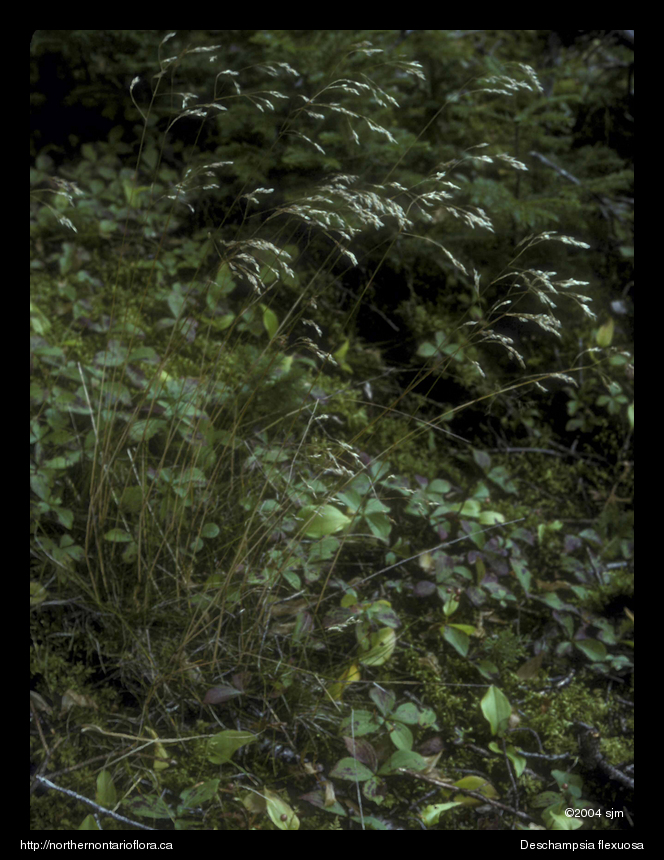
|
Northern Ontario Plant Database 
Plant DescriptionAvenella flexuosa (L.) DrejerEn: wavy hairgrass, crinkled hairgrass
Poaceae (Grass Family) Poaceae Reproductive Structures: A unique floral terminology is associated with grasses, since grass flowers are so different from the image that most people have of a typical flower, with large, colourful petals. Grass flowers are called florets and are arranged in a simple inflorescence, called a spikelet, which is subtended by 2 bracts, called glumes. Spikelets, in turn, are arranged in secondary inflorescences, usually racemes or panicles. Each spikelet is composed of 1 or more floret. Each floret is composed of 2 bracts – an inner bract, the palea, which is situated closest to the ovary, and an outer bract, the lemma, which is usually larger and firmer, and partially surrounds the palea. The tip of the lemma often extends into a long bristle, called an awn. The back surface of the lemma may be smooth or marked by prominent veins called nerves, which are often useful in identification. Enclosed within the lemma and palea of a typical floret is a single, superior ovary, bearing 2–3 feathery stigmas, 3–6 stamens, and 2–3 reduced floral parts, called lodicules, which are sometimes modified into tufts of bristles or hairs of various length. In spikelets with more than one flower, the florets are arranged along a central axis called a rachilla, When florets mature, the rachilla often breaks into short segments and dehisces with the floret. These terms are used throughout the descriptions of grass species. General: Perennial tufted grass, with pale to reddish flowering stems, 3–8 dm tall. Leaves: Mostly basal, short, to 2 dm long, narrow and hair-like (setaceous), to 1 mm wide, with margins rolled inward (involute), the sheaths rough (scabrous). The ligule, a thin, translucent flap of tissue, situated at the junction of the leaf sheath and blade, is less than 1 mm long. Inflorescence: Loose, open panicle, 5–12 cm long, with spikelets situated at the branch ends. Spikelets: 2-flowered, bronze to purplish, 4–5 mm long. Lemmas are 4–5 mm long, scabrous, with 4 pointed teeth at the apex, and bear an awn near their base. The awn, 5–7 mm long, is bent (geniculate) and twisted below the middle. A tuft of fine hairs, about 1 mm long, are attached at the base of the lemma, but hidden by the glumes. Glumes are smooth, with one central vein (nerve); the inner glume is slightly longer than the outer, both are shorter than the florets and persistent after the grains drop. Habitat and Range: Sandy or rocky, dry acidic habitats, characteristic of granite outcrops and sandy barrens (Dore & McNeill 1980). Similar Species: The tufted hairgass, Deschampsia cespitosa, is a somewhat taller grass with wider, flat or folded leaves, to 4 mm wide. The lemmas are smooth and bear a shorter, straight awn. Back to species list |
||||||||||||||||||||||










